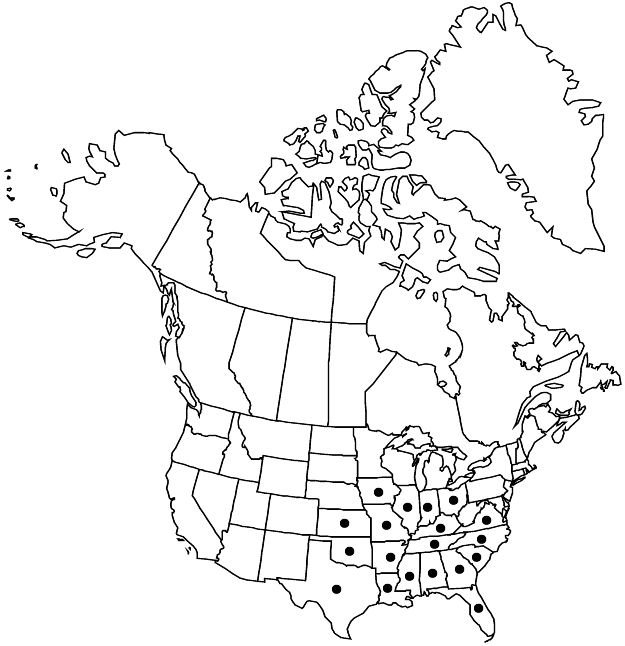Hypericum drummondii
Fl. N. Amer. 1: 165. 1838.
Herbs annual, erect, branches strict, in distal 1/2, 1–8 dm, wiry. Stems: internodes 4-lined. Leaves erect to suberect, sessile; blade linear or linear-subulate to linearlanceolate, 5–22 × 0.5–1 mm, subcoriaceous, margins recurved to revolute, apex acute to obtuse, basal vein 1, midrib unbranched. Inflorescences narrowly to broadly triangular, 1–12-flowered, branching mostly monochasial. Flowers 5–8 mm diam.; sepals narrowly oblong to linearlanceolate, subequal, 3–7 × 0.7–1.3 mm, apex acute; petals golden yellow to orange-yellow, oblong, 4–7 mm; stamens 10–22, separate or obscurely 3-fascicled; styles (0.5–) 0.8–1.5 mm; stigmas broadly capitate. Capsules narrowly ovoid to ovoid-cylindric, 3.5–7 × 2.5–3 mm, length 1–1.2 times sepals. Seeds 0.9–1.1 mm; testa finely scalariform. 2n = 24.
Phenology: Flowering summer–early fall (Jul–Sep).
Habitat: Dry, sandy or clay soil in open woods, old fields, waste or rocky places
Elevation: 0–1100 m
Distribution

Ala., Ark., Fla., Ga., Ill., Ind., Iowa, Kans., Ky., La., Miss., Mo., N.C., Ohio, Okla., S.C., Tenn., Tex., Va.
Discussion
Hypericum drummondii is closely related to H. gentianoides.
Selected References
None.
Lower Taxa
"dm" is not declared as a valid unit of measurement for this property.No values specified.